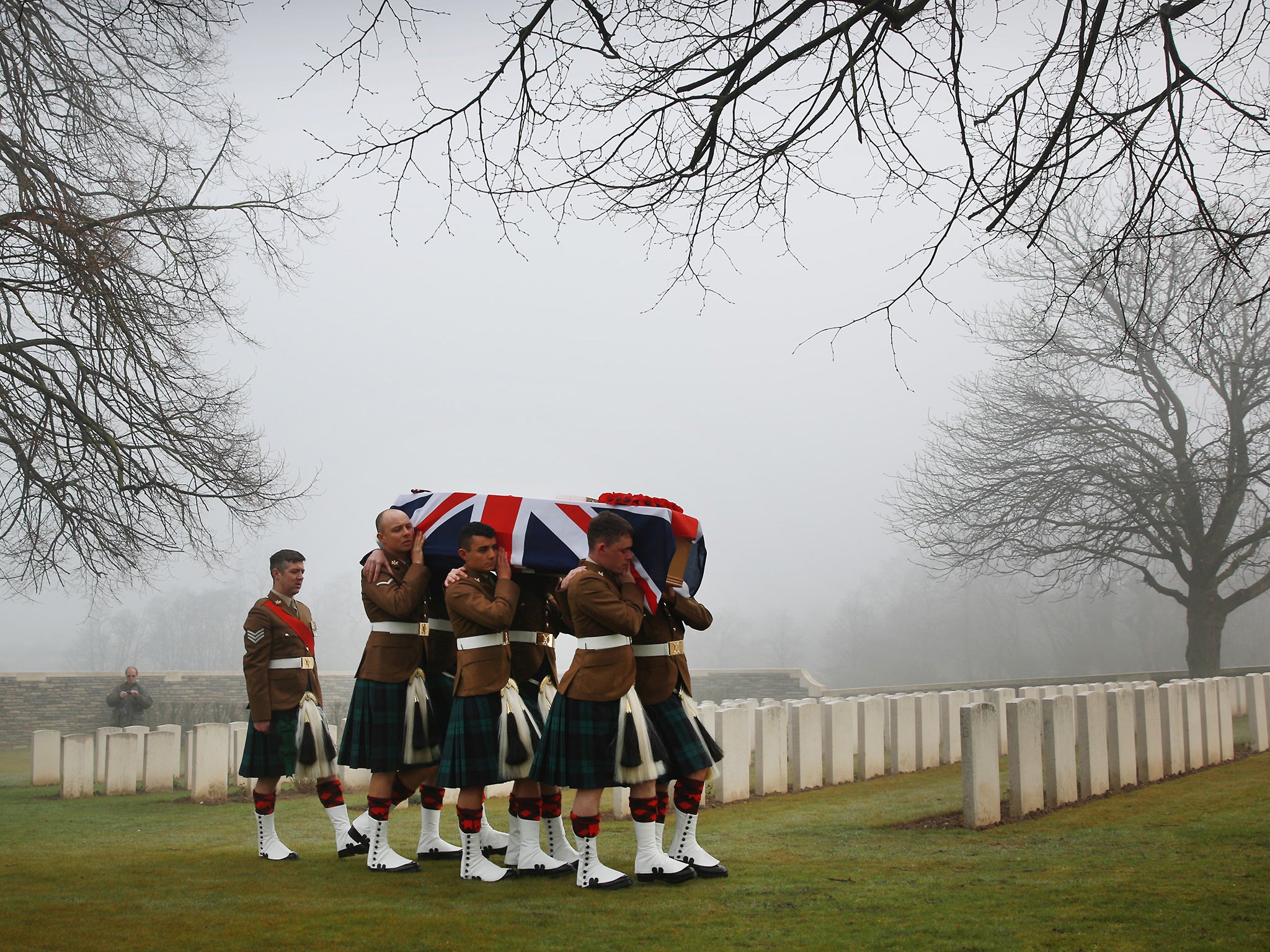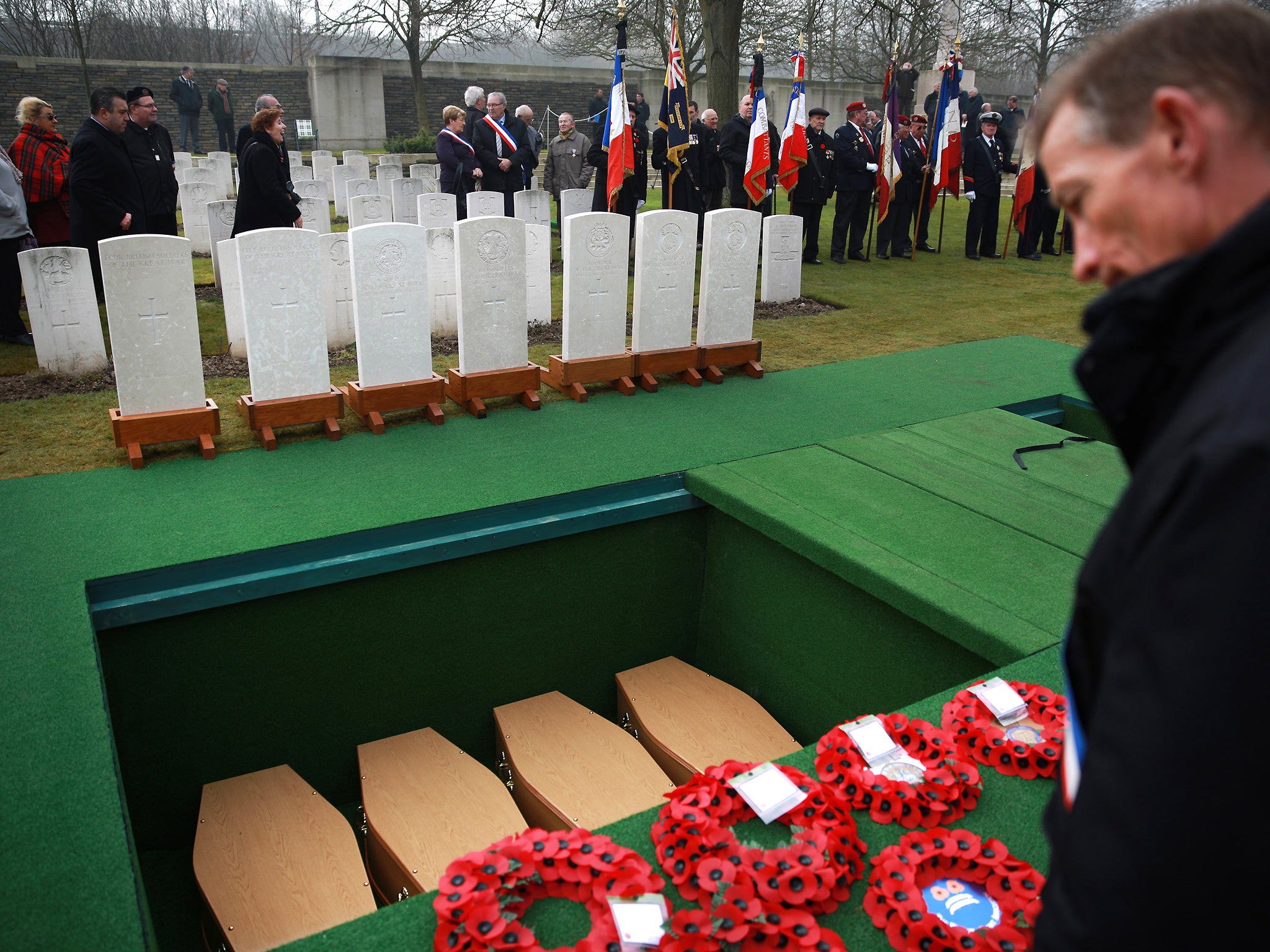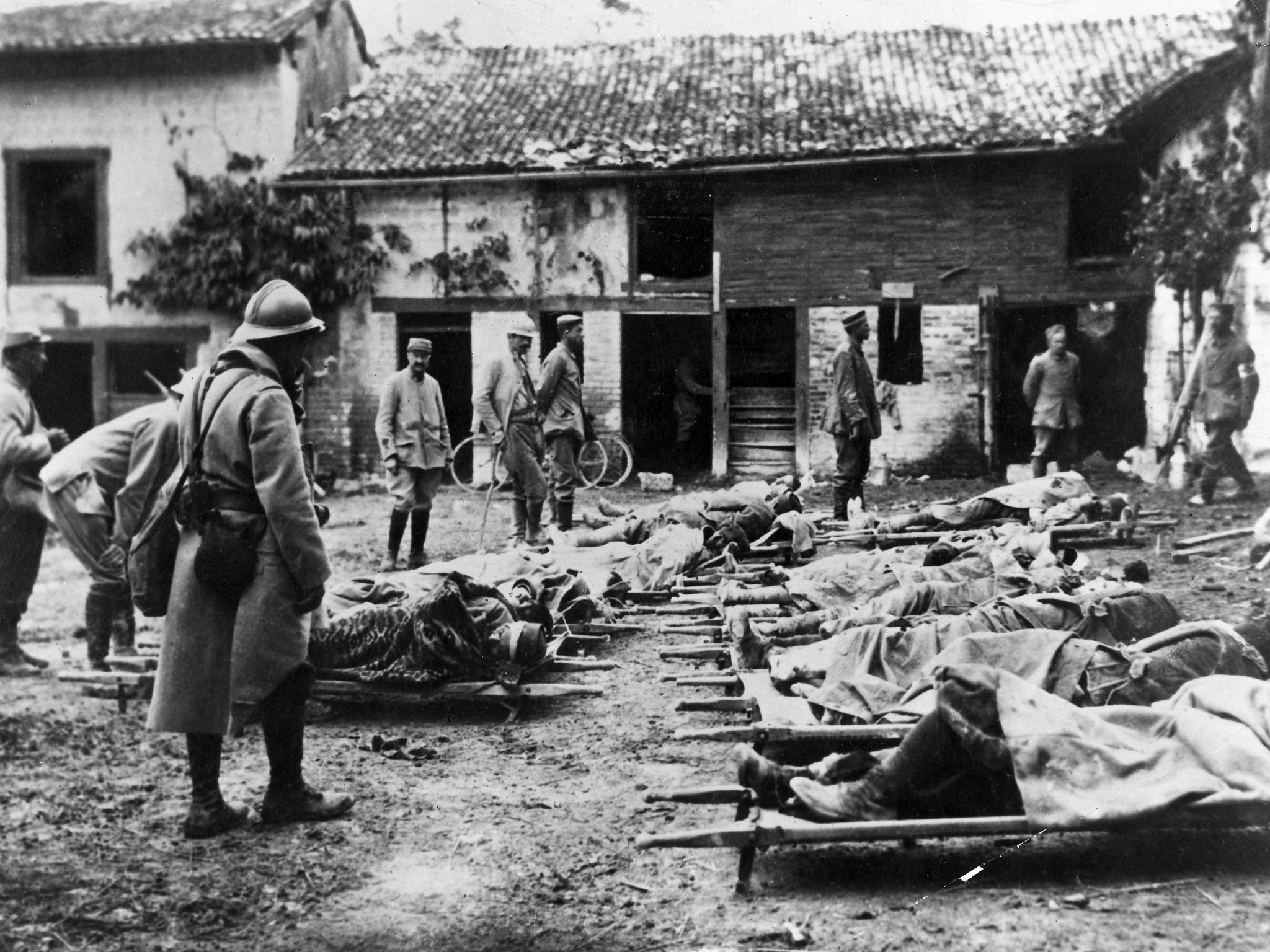99 years after First World War offensive that cost 60,000 British soldiers' lives, 20 are finally laid to rest with military honours
The 1915 Battle of Loos began in what was referred to as the 'Big Push', with more than 30,000 Scottish soldiers taking part

Your support helps us to tell the story
From reproductive rights to climate change to Big Tech, The Independent is on the ground when the story is developing. Whether it's investigating the financials of Elon Musk's pro-Trump PAC or producing our latest documentary, 'The A Word', which shines a light on the American women fighting for reproductive rights, we know how important it is to parse out the facts from the messaging.
At such a critical moment in US history, we need reporters on the ground. Your donation allows us to keep sending journalists to speak to both sides of the story.
The Independent is trusted by Americans across the entire political spectrum. And unlike many other quality news outlets, we choose not to lock Americans out of our reporting and analysis with paywalls. We believe quality journalism should be available to everyone, paid for by those who can afford it.
Your support makes all the difference.Twenty British soldiers killed in action during the First World War have finally been laid to rest with full military honours, almost 100 years after they died.
The soldiers who perished in the Battle of Loos in 1915 were found in 2010 during clearance work for a new prison near Vendin-le-Vieil, north of Arras, in France.
Only one of the troops discovered has been identified - Private William McAleer, of the 7th Battalion the Royal Scottish Fusiliers, part of the 45th Brigade, 15th (Scottish) Division.
Born in Leven, Fife, 22-year-old Pte McAleer died shortly after the battle began and he was identified due to his body being found with his small home-made oval metal tag with his name on it.
It is understood that the young soldier's family emigrated to the United States, the Ministry of Defence (MoD) said.
Very little is known about Pte McAleer but it is known that his father was a miner who died in a pit accident, and his mother later remarried.
Among the other soldiers who died and were found at the same time were a Northumberland Fusilier, another six Royal Scottish Fusiliers and a member of the York and Lancaster Regiment.
In addition, there were two Queen's Own Cameron Highlanders and nine others whose regiment has not been identified.
The remains of 30 German soldiers were also found nearby, and they were handed over to the German authorities.
Today representatives from all the regiments with links to the British troops attended a reinterment service at the Commonwealth War Graves Commission Cemetery at Loos-en-Gohelle, near Lens.
Those who could not be identified were buried as soldiers "Known unto God" in front of more than 200 people, including Pte McAleer's great step nephew, Stephen McLeod, 47, who travelled from Scotland.

All 20 soldiers were given full military honours. Pte McAleer's coffin was given his own burial plot, with his headstone reading "13766, Private W. McAleer Royal Scots Fusiliers, 26th September 1915, age 22".
The remainder were buried in six other plots side by side.
In thick fog, a piper led six bearers as they carried Pte McAleer's Union flag-draped coffin topped with a wreath, belt and cap past the crowds and the burial plots of hundreds of other fallen soldiers.
A military firing party fired a salute during the service and the Last Post was played.
The Battle of Loos began on September 25, 1915 and was the largest conflict for the British Expeditionary Force (BEF) in the war to that time.
The opening of the battle was noted for the first use of poison gas by the British Army. The attack at Loos consisted of six divisions before ammunition and heavy artillery had been sufficiently stocked.

It began in what was referred to at the time as the "Big Push", with more than 30,000 Scottish soldiers taking part in the attack.
Initial success for the division soon ground to a halt, with reserves too far behind to make a significant impact, making it impossible to build on the early gains.
Although the British had broken into enemy lines, they could not break through. Pte McAleer and the 19 other British troops were found near Hill 70, the scene of bitter fighting in the first two days of battle.
On September 25, 1915 Pte McAleer's battalion had reached Hill 70 to the east of Loos and dug in behind the crest line.
They fought off a German counter-attack during the night before being ordered to attack a German redoubt the following morning.

Although they entered the German trenches, after fierce hand-to-hand fighting they were forced to retreat to their start positions.
They were then subjected to heavy artillery bombardment which led to their withdrawal later after two unsuccessful bids by 21 Division to join up had failed.
Records of the 7th Battalion the Royal Scots Fusiliers showed that in just two days of battle, 69 died, 258 were wounded and 181 were missing.
By the end of September, it was clear that the hoped-for breakthrough was not going to materialise, with huge losses being sustained.
The Loos Memorial near where the 15th (Scottish) Division went into action carries the names of more than 20,000 missing from the battle.
PA
Join our commenting forum
Join thought-provoking conversations, follow other Independent readers and see their replies
Comments